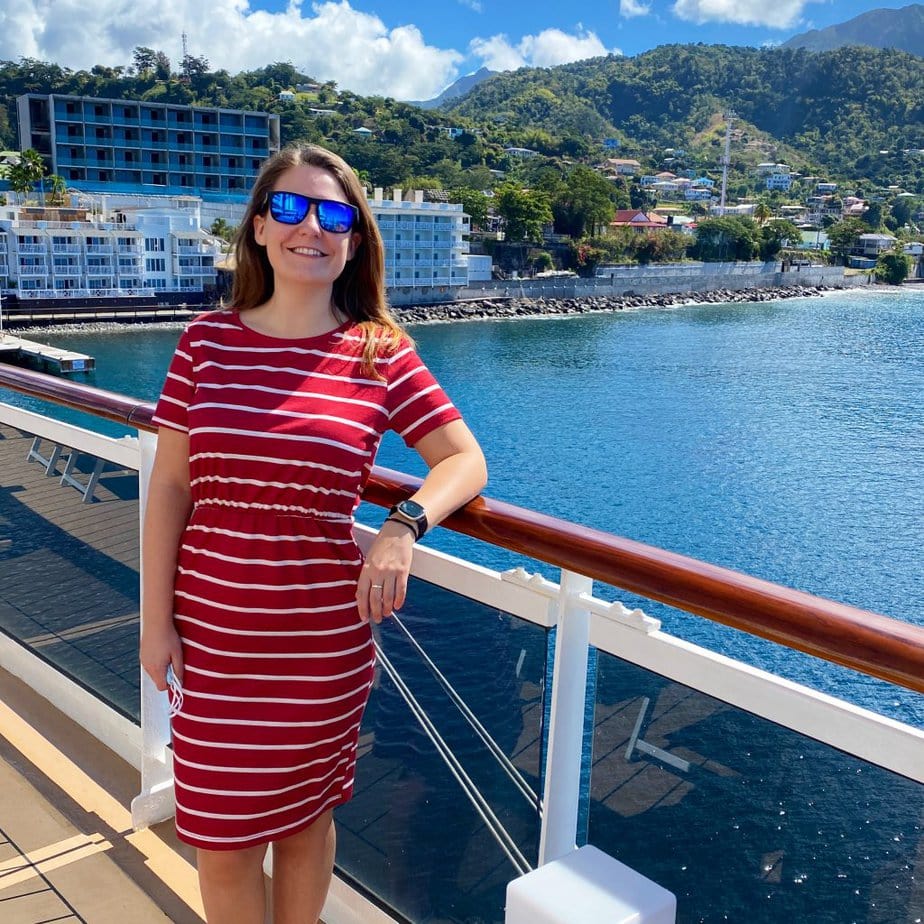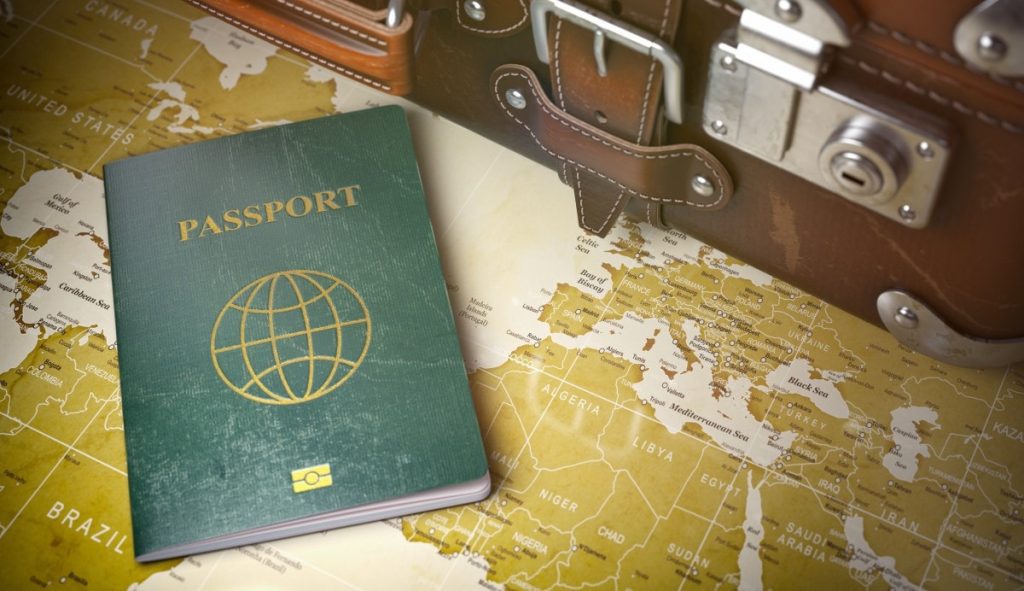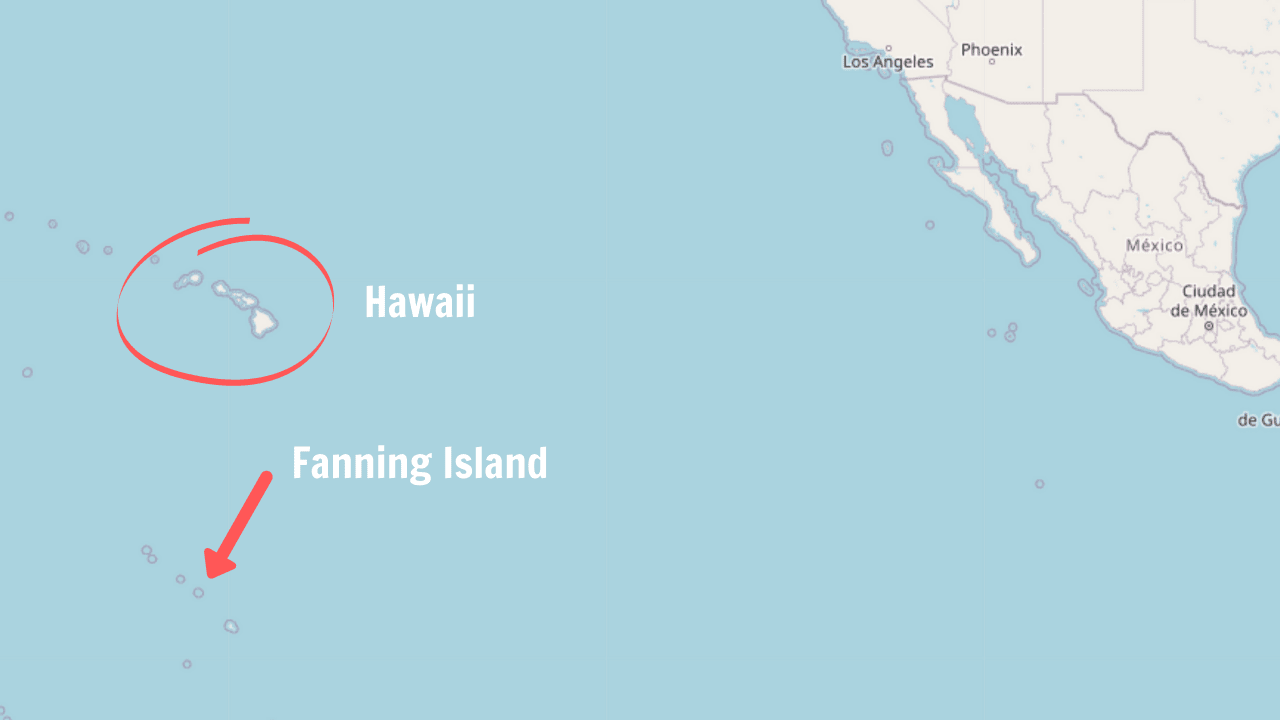If you are taking a cruise from the US, you may be wondering why all itineraries include a port stop in a foreign port.
The most notable examples of this are often Alaskan itineraries that include a Canadian port.

In many other parts of the world, it is possible to take a cruise with no ports, or a few ports in the same country.
Cruise lines having to stop in foreign ports when sailing from the US has meant that ‘cruises to nowhere’ are not possible.
There are a couple of exceptions to this rule.
Why Do Cruises From The US Have to Stop in Canada or Another Foreign Port?
All cruises sailing from the U.S. must stop in Canada or another foreign port due to the Passenger Vessel Services Act (PVSA).
Under this act, foreign-flagged ships must visit at least one foreign country during the cruise. A cruise line would face significant penalties for not complying.
PVSA came into force in 1886. At the time, U.S. ferries & passenger liners were feeling squeezed out of domestic shipping routes by foreign companies.
The legislation was an attempt to protect and grow U.S. shipping by eliminating these foreign competitors.
Much has changed in the 135 years since, and while it now arguably prevents growth rather than supports it, the PVSA remains U.S. law.
There have been many calls for this act to be amended or removed. For cruisers, this became a particular in 2021, when Canada effectively cancelled the Alaska cruise season by refusing to allow even technical port stops for cruise ships to comply with PVSA.
The last cruise I took from the U.S. was on Carnival Magic. We sailed from New York and visited Canada. We had a wonderful time. Find out all about that cruise here:
Passenger Vessel Services Act
Under PVSA, a ship cannot transport “passengers” directly between U.S. ports.
For the purposes of this act, “a passenger” is anybody who doesn’t work for the cruise line or shipping company.
This act aimed to protect U.S. shipping companies, the idea being that foreign companies had unfair advantages – foreign government subsidies, lower operating costs due to less rigorous standards, etc.
Today, many American companies are disadvantaged and they choose to register their cruise ships in other countries.
Why Don’t Cruise Companies Based in the US Flag Their Cruise Ships There?
There are many challenges to flagging a ship in the U.S.A. A ship must be 90% constructed in a U.S. shipyard to fly the U.S. flag.
As most modern cruise ships are now built in Germany, Finland, France, or Italy, they would not meet this requirement.
Also, since most U.S. shipyards rely on lucrative government contracts to build military vessels, they lack the necessary skills to build a modern cruise ship.
Flagging a cruise ship in another country also means that the cruise line can take advantage of that foreign country’s employment regulations.

While U.S. federal law sets a $7.25 (USD) minimum wage, cruise lines can legally pay their crew on foreign-flagged cruise ships less than that amount – even when sailing from U.S. ports.
There are also significant tax benefits for cruise lines.
While this may seem unfair at first glance, it’s important to remember that most crewmembers come from developing nations and view cruise ship employment as a valuable opportunity.
The wages offered onboard are typically many times over what they can make back home, allowing crewmembers to care for their families.
Given the difficulty of immigrating to, or working in the U.S. legally, cruise ship employment is a great opportunity that wouldn’t otherwise exist for them.
To learn more about why cruise lines flag their ships in foreign ports and where the most popular countries are to flag ships, check out this post:
Almost All Cruise Ships Fly Foreign Flags, Heres 3 Reasons Why.
The Passenger Vessel Services Act applies to all ships above five tons – so this does include Ferries as well as cruise ships.
How the Passenger Vessel Services Act Affects Cruise Passengers
Cruise Itineraries Always Include a Foreign Port
Perhaps the most apparent way passengers are affected by this act is that each cruise itinerary sailing from the U.S. on a foreign-flagged ship will include one port stop in a foreign country.
This can make it difficult for passengers who do not have passports, as there are only some U.S. cruises that allow passengers to sail without passports.
They’re “Closed-Loop” itineraries, which means that the ship leaves and departs from the same U.S. port.
You should always double-check with your travel agent or cruise line to see what documentation is required for your cruise.
If a cruise must stop at a foreign port that requires a passport, an American without one would not be able to cruise on the itinerary.

To learn more about where you can cruise without a passport (from the US) and what happens if you have to disembark in a foreign port, check out this post:
Do You Need A Passport To Cruise? (Everything You Need To Know)
Cruise Lines Can Incur PVSA Violation Fines, Which Are Sometimes Passed On To Passengers.
Cruise lines incur a $762 (USD) fine for every passenger they carry between U.S. ports without a foreign port stop.
These fines can quickly add up. For example, if the current largest cruise ship in the world were at maximum occupancy and violated PVSA rules, the cruise line would be fined over $5.3 million!
If you decide to leave the cruise early on your own in a different U.S. port (except in emergencies), the cruise line might pass that $798 cost on to you.
Carnival Cruise Line warn their passengers of the following:
Any guest who, due to emergencies or other unforeseen circumstances, insists on embarking or disembarking the vessel at a different port than planned, which results in a violation of the PVSA, will accept responsibility for any resulting penalties ($762 USD per person in 2023, but subject to change each year).
Carnival Cruises
There are a couple of reasons why a passenger may leave a cruise early. They may have some form of family emergency or be injured and need to be disembarked from the cruise.
In rare circumstances, a passenger may be asked to leave a cruise, for example, if they were behaving badly or were a threat to themselves or other passengers or crew.
Cruise ships do have jails onboard where they keep passengers that are a danger – but the aim of the cruise line is never to keep passengers in the onboard jail.
To learn more about cruise ship jails, including what passengers get sent to jail for doing, check out this post:
Cruise Ship Jails – Why Do They Have Them and What Are They Like?
In reality, if the reason for breaking the act was unintentional – such as bad weather preventing docking or a medical emergency – it may be possible to avoid the fines, although this is not guaranteed.
US Flagged Ships Don’t Have to Visit a Foreign Port
The Passenger Vessel Services Act only states that foreign-flagged cruise ships can’t transport passengers between US ports without visiting a foreign country.
There is currently only one cruise ship from a mainstream cruise line that is flagged in the US and is therefore unaffected by the act.
Norwegian Cruise Line Initially Flagged Three Ships in The US to Avoid The Foreign Port Requirement
Norwegian Cruise Line has cruised in Hawaii for decades, I took a cruise to Hawaii onboard one of their US-flagged ships in 2005, which was amazing.
At one point Norwegian Cruise Line had 3 cruise ships flagged in the US to be able to cruise to Hawaii without visiting a foreign port.
| Cruise Ship | Year When US Flagged | Current Flag | Current Name |
| Pride of Aloha | 2004 | Bahamas | Norwegian Sky |
| Pride of America | 2005 | USA | Pride of America |
| Pride of Hawaii | 2006 | Bahamas | Norwegian Jade |
Before they had US-flagged cruise ships, Hawaii Cruises would detour to Fanning Island in Kiribati, the closest foreign port to Hawaii.
This meant that the cruises technically visited a foreign port, but the detour did take 4 days.

There are several problems for a cruise line that comes with flagging a cruise ship in the US.
As a result, Norwegian Cruise Line currently only has one US-flagged cruise ship with the rest being reflagged and repositioned elsewhere.

Visiting a “Distant Foreign Port” on Open Loop Itineraries
All the restrictions discussed so far involve Closed-Loop itineraries (those that start and end in the same U.S. port).
But what about cruises that start and end in different U.S. ports? These are called Open-Loop itineraries.
If a cruise visits a “distant” foreign port such as South America, the cruise line can start the cruise in one U.S. port and end it in another.
That’s why nearly all Panama Canal cruises that begin in California and end in Florida (or vice versa) have a port call in the South American country of Columbia – usually Cartagena.
Countries such as Canada and Mexico are not considered “distant.”
What Is The Difference Between The Passenger Services Vessels Act and the Jones Act?
The difference between the Passenger Services Vessels Act and the Jones Act is that the Passenger Services Vessels Act applies to all ships that transport passengers, and the Jones Act applies to cargo ships only.
The function of both acts is the same, to prevent non-US-flagged ships from sailing from US port to US port without stopping at a foreign port.
The Jones Act was created later than the Passenger Services Vessels Act – in 1920. Many people mistakenly assume that the Jones Act applies to cruise ships – but it doesn’t.
Before You Go
Find out more about whether you need a passport to cruise here:
Do You Need A Passport To Cruise? (Everything You Need To Know)
Find out why on some cruises, the cruise line will keep your passport while you are sailing in the article below:
Why Do Cruise Ships Keep Your Passport?

Free Insiders Cruise Line Guide
Ever wondered how the mainstream cruise lines compare? Cruise lines won’t tell you this, but I will.
This FREE guide shows you everything you need to know to find your perfect cruise line.
